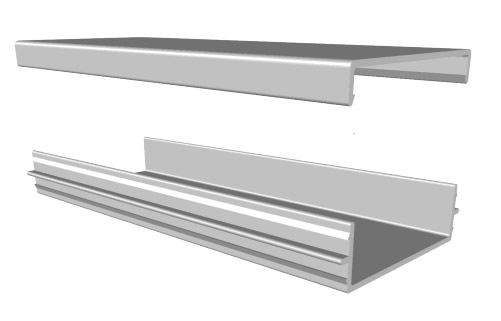
Effective cable management is essential for maintaining safety, organization, and functionality in residential, commercial, and industrial settings. Two popular options for cable management are wire trays and wire clips, each offering unique advantages and disadvantages. Understanding their differences can help determine the best choice for your specific needs.
What Are Wire Trays?
Wire trays are structured pathways made of metal or plastic that organize and support cables. They are typically mounted along walls, ceilings, or floors and can handle large volumes of cables.
Pros of Wire Trays
- Capacity: Wire trays are ideal for managing large bundles of cables, making them suitable for data centers, industrial settings, and large office spaces.
- Durability: Made from materials like steel or aluminum, wire trays are robust and can handle heavy cables without deformation.
- Ease of Access: Open designs allow for easy addition, removal, or rearrangement of cables without the need for disassembly.
- Safety: Wire trays prevent cables from tangling, reducing the risk of damage or overheating.
- Customizability: Available in various sizes and configurations to fit specific layouts and requirements.
Cons of Wire Trays
- Cost: Wire trays are often more expensive than wire clips due to their materials and installation requirements.
- Installation Complexity: Installing wire trays requires professional tools and expertise, which can increase labor costs.
- Space Requirements: They take up more physical space, which can be a limitation in compact environments.
Applications of Wire Trays
Wire trays are commonly used in large-scale cable management systems, such as data centers, manufacturing facilities, and commercial buildings where a significant volume of cables needs to be managed.
What Are Wire Clips?
Wire clips are small devices used to secure individual or small bundles of cables to walls, ceilings, or furniture. They are typically made from plastic or metal and feature adhesive backs or screw mounts.
Pros of Wire Clips
- Affordability: Wire clips are cost-effective, making them an excellent choice for small-scale applications.
- Easy Installation: Most wire clips come with adhesive backing or simple screw mounts, allowing for quick and straightforward installation.
- Compact Design: Wire clips take up minimal space and are suitable for smaller, more confined setups.
- Flexibility: They are great for organizing smaller cable runs, such as behind desks, along walls, or in residential settings.
Cons of Wire Clips
- Limited Capacity: Wire clips are not designed to hold large bundles of cables and may not be suitable for industrial applications.
- Durability Issues: Adhesive-backed clips can lose their stickiness over time, especially in environments with high heat or humidity.
- Limited Access: Removing or rearranging cables can be cumbersome, as each clip must be adjusted individually.
Applications of Wire Clips
Wire clips are ideal for home offices, residential cable management, and smaller commercial setups where only a few cables need organizing.
Wire Trays vs. Wire Clips: When to Use Each
- Choose Wire Trays When:
- Managing a large volume of cables.
- Durability and easy access are critical.
- The project involves industrial, commercial, or data center environments.
- Choose Wire Clips When:
- Managing a small number of cables.
- Cost is a primary concern.
- The application requires minimal space and simple installation, such as home office setups or entertainment systems.
Additional Tips for Cable Management
- Combine Solutions: In some cases, using both wire trays and clips can offer a balanced solution, particularly in mixed-use environments.
- Plan Ahead: Ensure that the chosen system can accommodate future cable additions or modifications.
- Consider Environment: Choose materials and installation methods that suit the specific conditions, such as humidity, temperature, and load capacity.
Conclusion
Both wire trays and wire clips provide effective solutions for cable management, but their suitability depends on the specific application. Wire trays excel in large-scale and industrial settings, offering durability and capacity, while wire clips are better suited for smaller, budget-friendly setups. By understanding the pros and cons of each option, you can make an informed decision to ensure safety, organization, and efficiency in your cable management system.

